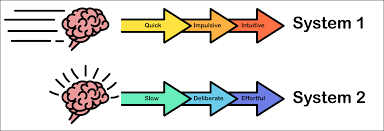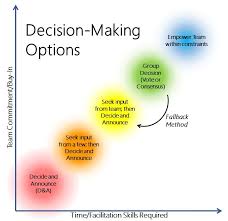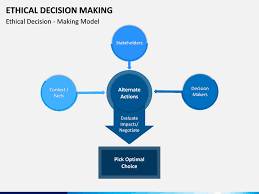Demystifying RFPs: A Guide to Request for Proposals
In the world of business, Request for Proposals (RFPs) play a vital role in the procurement process. Whether you’re a seasoned professional or new to the concept, understanding RFPs is crucial for successful project execution. In this article, we’ll demystify RFPs and provide you with a comprehensive guide to navigating through them.
What is an RFP?
An RFP is a formal document that organizations use to solicit proposals from potential vendors or service providers. It outlines the project requirements, objectives, and evaluation criteria. By issuing an RFP, organizations can gather detailed information about potential solutions and make informed decisions.
Why are RFPs important?
RFPs serve several important purposes. Firstly, they help organizations define their needs and requirements clearly. By specifying their expectations upfront, they can ensure that all potential vendors understand what is expected of them.
Secondly, RFPs allow organizations to compare different proposals on an equal footing. By providing vendors with the same set of requirements and evaluation criteria, organizations can objectively evaluate and compare their offerings.
Lastly, RFPs promote transparency and accountability in the procurement process. They outline the evaluation process and criteria, ensuring that vendors are selected based on merit rather than personal relationships or biases.
Key components of an RFP:
Introduction: This section provides background information about the organization issuing the RFP and sets the context for the project.
Project Overview: Here, you’ll find a detailed description of the project objectives, scope, timeline, and deliverables. It’s essential to clearly articulate what you expect from potential vendors.
Requirements: This section outlines specific technical specifications or functional requirements that must be met by any proposed solution.
Evaluation Criteria: Clearly define how you will evaluate proposals based on factors such as cost-effectiveness, technical capabilities, experience, and past performance.
Submission Guidelines: Specify the format, deadline, and any additional requirements for submitting proposals. This section ensures that all vendors adhere to the same guidelines.
Contract Terms: Include any legal or contractual terms that vendors must agree to if selected. This protects both parties and ensures a smooth working relationship.
Tips for responding to an RFP:
Read the RFP carefully: Understanding the requirements and evaluation criteria is crucial before preparing your proposal.
Tailor your response: Customize your proposal to address the specific needs outlined in the RFP. Generic or boilerplate responses are unlikely to stand out.
Highlight your unique selling points: Clearly articulate how your solution meets the organization’s needs better than your competitors’.
Be concise and organized: Present information in a clear and structured manner, making it easy for evaluators to follow.
Provide evidence of past success: Include case studies, testimonials, or references that demonstrate your experience and ability to deliver results.
Follow instructions: Adhere strictly to submission guidelines, including formatting requirements and deadlines.
Conclusion:
Request for Proposals (RFPs) are an essential tool in the procurement process, enabling organizations to find the best solutions for their projects while promoting transparency and accountability. By understanding the key components of an RFP and following best practices when responding, both organizations and vendors can engage in a fair evaluation process that leads to successful partnerships and project outcomes.
5 Essential Tips for Writing an Effective RFP Response
- Read the RFP thoroughly
- Address all requirements
- Highlight unique selling points
- Provide evidence and references
- Create a compelling executive summary
Read the RFP thoroughly
The Importance of Reading the RFP Thoroughly in the Procurement Process
When it comes to responding to a Request for Proposal (RFP), one of the most crucial tips for success is to read the RFP thoroughly. This seemingly simple step is often overlooked or rushed through, leading to missed opportunities and potential pitfalls. In this article, we’ll explore why reading the RFP carefully is essential and how it can significantly impact your chances of winning a contract.
First and foremost, reading the RFP thoroughly allows you to understand the project requirements and objectives in detail. By carefully reviewing each section, you gain valuable insights into what the organization issuing the RFP is looking for. This understanding enables you to tailor your proposal accordingly, addressing their specific needs and showcasing how your solution aligns with their goals.
Furthermore, a thorough reading helps you identify any mandatory criteria or specific instructions that must be followed when submitting your proposal. Failure to adhere to these requirements can lead to disqualification right from the start. By paying close attention to submission guidelines, formatting requirements, and deadlines, you demonstrate professionalism and attention to detail.
Another benefit of reading the RFP carefully is that it allows you to identify evaluation criteria. Understanding how proposals will be assessed helps you focus on key areas that are most important to the organization. It enables you to highlight your strengths in those areas and address any potential weaknesses proactively.
Moreover, by fully comprehending the RFP, you can ask relevant questions during any clarification sessions or pre-bid meetings. This demonstrates your engagement and commitment while also providing an opportunity for clarifications on ambiguous points. Asking thoughtful questions can help you gain additional insights into what the organization is seeking, giving you a competitive edge when crafting your proposal.
In summary, reading an RFP thoroughly is not just a mere formality but a critical step in positioning yourself for success in the procurement process. It allows you to understand project requirements, follow submission guidelines, address evaluation criteria effectively, and seek clarifications when needed. By investing time and effort into this initial step, you set yourself up for a stronger proposal that stands out from the competition. Remember, in the world of RFPs, attention to detail can make all the difference between winning and losing a contract.
Address all requirements
When it comes to responding to Request for Proposals (RFPs), one crucial tip stands out: address all requirements. This may seem like an obvious point, but it is surprising how often proposals fall short in meeting all the specified criteria.
An RFP typically outlines the organization’s needs, objectives, and expectations in great detail. It is essential to thoroughly read and understand every requirement before crafting your response. Take the time to analyze each requirement and consider how your proposed solution aligns with them.
Addressing all requirements demonstrates your attention to detail and commitment to meeting the organization’s needs. It shows that you have taken the time to fully comprehend what they are looking for and have tailored your proposal accordingly.
Failing to address even a single requirement can significantly impact your chances of success. Evaluators may view it as a lack of understanding or disregard for their specific needs, leading them to question your ability to deliver on the project.
To ensure you address all requirements effectively, create a checklist or spreadsheet that lists each requirement alongside your proposed solution or approach. This will help you keep track of what needs to be addressed and ensure nothing is overlooked.
If there are any requirements that you cannot meet or have concerns about, be transparent about it in your proposal. Clearly explain why you may not meet a particular requirement and offer alternative solutions or mitigating factors if possible. Honesty and open communication can go a long way in building trust with evaluators.
Remember, an RFP is a structured document designed to help organizations find the best possible solution for their project. By addressing all requirements thoughtfully and thoroughly, you demonstrate your commitment to meeting their needs and increase your chances of success in securing the opportunity.
In conclusion, when responding to an RFP, take the time to understand and address all requirements outlined by the organization. By doing so, you showcase your attention to detail, alignment with their needs, and increase your chances of standing out among the competition.
Highlight unique selling points
Highlighting Your Unique Selling Points in RFP Responses: Stand Out from the Competition
When responding to a Request for Proposal (RFP), it’s crucial to showcase your unique selling points to set yourself apart from the competition. In a sea of proposals, capturing the attention of evaluators and demonstrating why your solution is the best fit can make all the difference. Here’s how you can effectively highlight your unique selling points in your RFP response.
- Understand the RFP requirements: Before highlighting your unique selling points, thoroughly understand the project requirements outlined in the RFP. Align your selling points with these requirements to demonstrate how your solution meets and exceeds them.
- Identify what makes you stand out: Take a step back and objectively evaluate what sets you apart from others. Is it your extensive experience, innovative approach, cutting-edge technology, or exceptional customer service? Identify these unique qualities that make your proposal compelling.
- Tailor your response: Customize your response to address the specific needs and pain points highlighted in the RFP. Clearly articulate how your unique selling points directly address those challenges better than any other vendor’s offering.
- Provide evidence and examples: Back up your claims with concrete evidence and examples of past successes or case studies that demonstrate how your unique selling points have delivered value to previous clients or projects. This helps build credibility and instills confidence in evaluators.
- Differentiate with benefits, not just features: While it’s important to highlight features that make you stand out, don’t forget to emphasize the benefits these features bring to the organization issuing the RFP. Explain how these unique selling points will solve their problems, save costs, enhance efficiency, or drive growth.
- Use clear and concise language: Clearly communicate your unique selling points using concise language that is easy for evaluators to understand quickly. Avoid jargon or technical terms that may confuse readers who are not familiar with industry-specific terminology.
- Visualize your selling points: Utilize visual aids such as infographics, charts, or diagrams to present your unique selling points in a visually appealing and easily digestible manner. Visuals can help convey complex information more effectively and leave a lasting impression.
- Focus on the value proposition: Articulate the overall value proposition of your solution. Highlight how your unique selling points align with the organization’s goals and objectives, and emphasize the positive impact your solution will have on their business.
Remember, an RFP response is an opportunity to showcase why you are the best choice for the project. By effectively highlighting your unique selling points and demonstrating how they align with the organization’s needs, you can significantly increase your chances of standing out from the competition and securing a successful partnership.
Provide evidence and references
When it comes to responding to a Request for Proposal (RFP), providing evidence and references can make a significant impact on the evaluation process. Including this information not only adds credibility to your proposal but also demonstrates your capability to deliver results. In this article, we will explore why providing evidence and references is crucial and how it can enhance your chances of success.
One of the primary reasons why evidence and references are essential in an RFP response is that they provide tangible proof of your past successes. By showcasing relevant case studies or projects you have worked on, you can effectively demonstrate your expertise in handling similar challenges. This evidence allows the organization issuing the RFP to assess your capabilities and determine if you are the right fit for their needs.
Moreover, including references from satisfied clients or partners adds another layer of credibility to your proposal. Positive testimonials or recommendations from previous collaborators can inspire confidence in the evaluators that you have a track record of delivering quality outcomes. It shows that others have trusted and benefited from working with you, which can be persuasive in influencing their decision-making process.
When providing evidence and references in an RFP response, it’s important to ensure they are relevant and tailored to the specific requirements outlined in the document. Choose case studies or projects that closely align with the objectives and scope of the RFP. Highlight key achievements, measurable results, and any unique approaches or innovations that set you apart from competitors.
Additionally, seek permission from clients or partners before including them as references in your proposal. This demonstrates professionalism and respect for their privacy while also allowing evaluators to verify your claims if necessary.
Remember to present this information concisely yet effectively within your proposal. Use clear language, visuals if appropriate, and emphasize how these past experiences directly relate to solving the challenges outlined in the RFP.
In conclusion, providing evidence and references within an RFP response strengthens your credibility as a potential vendor or service provider. It allows organizations to assess your capabilities, past successes, and the satisfaction of previous clients or partners. By presenting compelling evidence and relevant references, you increase your chances of standing out among competitors and securing the opportunity to collaborate on exciting projects.
Create a compelling executive summary
Create a Compelling Executive Summary: The Key to Winning RFPs
When it comes to Request for Proposals (RFPs), one of the most critical sections that can make or break your chances of success is the executive summary. This concise yet powerful section serves as the gateway to capture the attention and interest of evaluators. In this article, we’ll explore why creating a compelling executive summary is essential and provide tips on how to craft one that stands out from the competition.
Why is the executive summary important?
The executive summary is often the first section evaluators read, and it sets the tone for the entire proposal. It provides a snapshot of your proposal’s key points, highlighting your unique value proposition and demonstrating that you understand the organization’s needs. A well-crafted executive summary can make a lasting impression, compelling evaluators to delve deeper into your proposal with enthusiasm.
Tips for creating a compelling executive summary:
- Understand the RFP: Before crafting your executive summary, thoroughly analyze the RFP document. Identify the organization’s goals, challenges, and desired outcomes. Tailor your summary to address these specific points, showcasing how your solution aligns with their needs.
- Keep it concise: An effective executive summary should be concise yet informative. Aim for no more than one or two pages in length while ensuring you cover all essential aspects of your proposal.
- Hook them from the start: Begin with a strong opening statement that grabs attention and creates an immediate connection with evaluators. Clearly articulate what makes your proposal unique and why it deserves consideration.
- Focus on benefits: Highlight how your solution will benefit the organization by addressing their pain points or challenges directly. Emphasize outcomes and results rather than getting lost in technical details.
- Showcase expertise and experience: Briefly demonstrate your team’s qualifications, relevant experience, and track record of success in similar projects or industries. This builds credibility and instills confidence in your ability to deliver.
- Use compelling language: Craft your executive summary using clear, concise, and persuasive language. Avoid jargon or technical terms that may confuse or alienate evaluators. Instead, focus on conveying your message in a simple and compelling manner.
- Proofread and edit: Ensure your executive summary is error-free and polished. Typos or grammatical mistakes can undermine the professionalism of your proposal. Take the time to review and revise your summary before submitting it.
Remember, the executive summary acts as a preview of what evaluators can expect from your entire proposal. It should be engaging, informative, and leave a lasting impression. By investing time and effort into creating a compelling executive summary, you increase your chances of standing out from the competition and ultimately winning the RFP.




